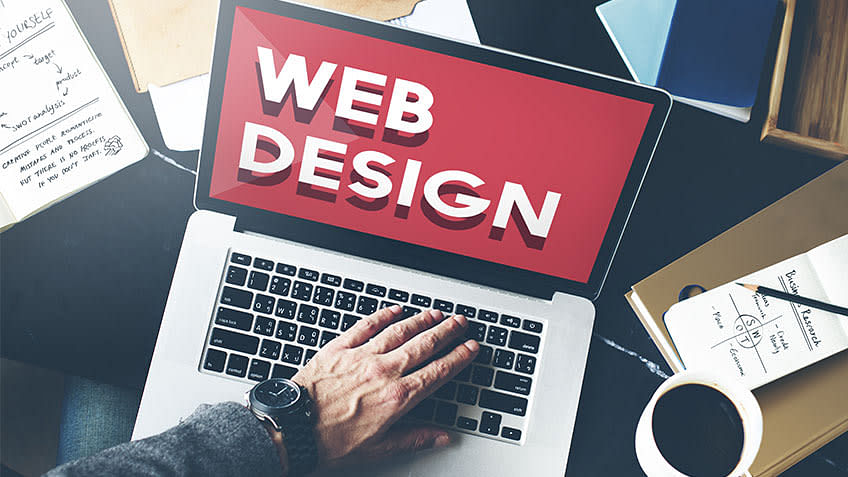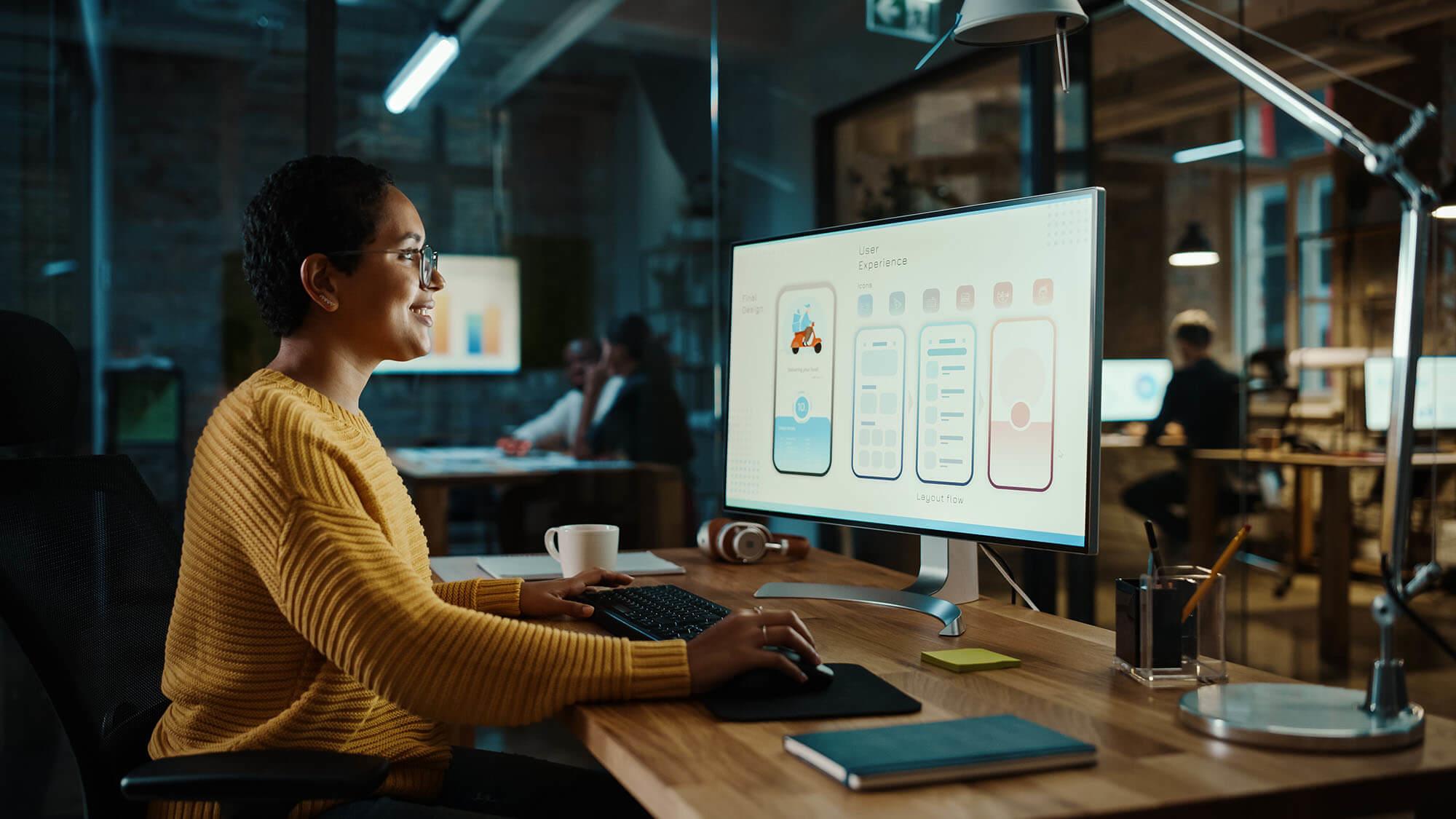Checking out the Effect of Individual Experience on Effective Web Design
Secret Factors To Consider to Bear In Mind When Establishing a Modern Website Design That Aligns With Present Fads
In the ever-evolving landscape of internet style, it is important to consider numerous crucial factors that not just show present trends but likewise improve user engagement. A receptive design is critical, making certain that individuals experience seamless capability throughout numerous gadgets. Focusing on individual experience through user-friendly navigation and visual allure can not be forgotten.
Responsive Style Concepts
In the ever-evolving landscape of website design, the execution of receptive style principles stands as an essential demand for creating user-friendly websites. Responsive design makes sure that internet pages provide well on a range of devices, from desktops to mobile phones and tablet computers. This versatility is accomplished through fluid grids, flexible photos, and media queries, which jointly permit a single site to give an optimal viewing experience across varied systems.
The core of responsive layout hinges on its ability to change design and content based upon the user's display size and orientation. By utilizing relative devices like percents rather of taken care of units like pixels, developers can create scalable formats that keep aesthetic honesty. In addition, using media questions permits the application of various designs depending on the qualities of the device, helping with tailored experiences that enhance usability.
Additionally, receptive style is not simply a technical consideration; it is critical in fitting the raising use of mobile devices for internet surfing. As individual assumptions progress, making sure access and functionality throughout all systems becomes crucial for maintaining engagement and complete satisfaction. Hence, accepting receptive layout principles is essential for modern-day web development, cultivating inclusivity and future-proofing digital web content.
Focus on User Experience
User experience (UX) has actually become a main emphasis in contemporary website design, enhancing the concepts of receptive design by focusing on just how users engage with sites. A properly designed UX can dramatically affect user engagement, fulfillment, and retention, underscoring the requirement for developers to create user-friendly and delightful experiences.
Key aspects of reliable UX design include use, capability, and aesthetics. Web sites ought to be very easy to browse, guaranteeing users can discover the information they look for without confusion. Clear and concise navigation food selections, constant format, and sensible material organization are crucial in accomplishing this goal. Additionally, performance plays a critical role; interactive aspects need to function flawlessly throughout all devices and browsers.

Furthermore, incorporating customer responses into the style procedure is important - web design. Carrying out functionality screening and celebration understandings from real individuals can give useful information to improve the design and address discomfort points. Inevitably, a strong focus on user experience will certainly assist create websites that reverberate with site visitors, promoting commitment and driving conversions
Importance of Availability
Ease of access is a fundamental aspect of modern website design, guaranteeing that all individuals, despite their abilities or impairments, can connect and browse with electronic material efficiently. As the internet becomes increasingly essential to every day life, it is important that web sites are comprehensive, accommodating a varied target market that consists of people with visual, auditory, cognitive, and electric motor problems.
Applying accessibility attributes not only follows lawful needs, such as the Americans with Disabilities Act (ADA) and the Internet Material Ease Of Access Guidelines (WCAG), but also improves individual experience for everyone. Accessible layouts commonly cause better navigation, much faster packing times, and enhanced search engine optimization, benefiting all individuals.
In addition, fostering a comprehensive digital setting mirrors favorably on a brand name's track record. Firms that focus on availability demonstrate social obligation and a dedication to equity, which can boost consumer commitment and widen their market reach.

Existing Visual Fads
Welcoming existing visual trends is crucial for producing engaging and visually appealing internet sites that record individual interest. In today's digital landscape, minimalism proceeds to dominate, stressing tidy lines, enough white room, and simple navigation. This method not just enhances readability yet likewise enables vital web content to beam, aligning with customer expectations for simpleness and clarity.
In addition, using vibrant typography is significantly prominent, providing an unique voice and enhancing brand identification. Huge, eye-catching fonts can develop aesthetic hierarchy, directing individuals with the material properly. Additionally, vivid color schemes are picking up, allowing developers to evoke feelings and create remarkable experiences.
One more trend is the unification of organic forms and unbalanced formats, which can add a component of shock and creativity, establishing a site aside from more standard designs. Moreover, the combination of immersive visuals, such as top quality photos and video clips, can involve individuals and share messages a lot more incredibly. web design.
As these aesthetic patterns progress, it is important for web designers to remain informed and adapt their methods, guaranteeing their productions continue to be relevant and reverberate with contemporary target markets.
Optimizing for Efficiency
While aesthetic factors to consider play a considerable duty in attracting individuals, enhancing for efficiency is similarly essential to guarantee a seamless surfing experience. A properly designed web site ought to pack quickly and react without delay to customer communications, as delays can lead to aggravation and enhanced bounce prices.
To attain optimum efficiency, developers need to focus on reducing file dimensions by compressing images and making use of reliable coding methods (web design). Implementing lazy loading strategies can additionally improve rate by postponing the loading of non-essential resources until they are required. Furthermore, leveraging Content Delivery Networks (CDNs) can disperse fixed assets closer to customers, decreasing latency
Moreover, it is important to make use of modern internet technologies such as HTML5 and CSS3, which not just improve efficiency but additionally enhance compatibility throughout different devices and internet browsers. Consistently keeping track of site speed using devices like Google PageSpeed Insights can give valuable insights into locations for renovation.

Verdict
In conclusion, modern Going Here internet layout demands a complex approach that incorporates receptive layout concepts, a focus on customer experience, and rigorous adherence to accessibility standards. Collectively, these considerations contribute to the development of an impactful and cohesive on the internet visibility that fulfills the diverse needs of modern customers.
In the ever-evolving landscape of internet layout, it is important to consider several crucial factors that not just mirror existing fads however likewise improve customer involvement. A receptive layout is vital, making sure that individuals over at this website experience seamless capability throughout different devices.The core of receptive layout exists in its capability to change layout and web content based on the customer's display size and orientation.Moreover, including customer comments into the layout procedure is necessary.In verdict, modern-day internet design necessitates a diverse approach that includes receptive style principles, a focus on user experience, and stringent adherence to ease of access criteria.